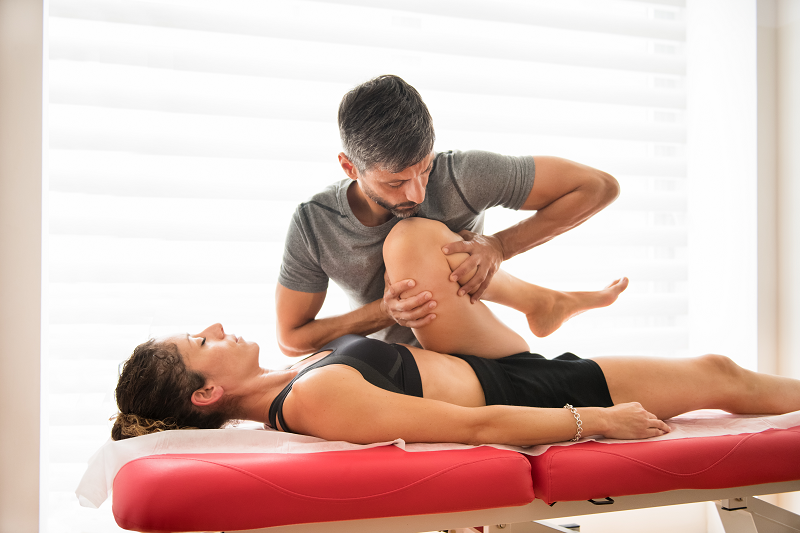What should I do if I notice discomfort after receiving a hip replacement?
After receiving a hip replacement operation, it is necessary to undergo a procedure that seats the prosthesis and make the patient feel comfortable with it, and, above all, learn to live with it and regain mobility until they get used to it and I didn't notice any discomfort.
In the case of hip replacements, it is more than advisable to start from the first day with a exercise schedule and postures let them search accelerate the rehabilitation process.

Symptoms after placement of the prosthesis
After a hip operation in which a prosthesis has been used, it is normal for some people to present discomfort months after receiving it.
For this reason, it is important to have rehabilitation professionals who seek to reduce these discomforts and for the patient to be educated about new postures and exercises that strengthen the muscles. In this way, the patient's progression is helped until they are fully recovered.
Among the main symptoms that a person may suffer after hip surgery with a prosthesis are:
- Inconvenience in the area of the groin: Some patients may experience discomfort after receiving a hip replacement in the groin area, or notice a pulling sensation.
- Pain because of the process of cicatrization: It is normal because the body is recovering. The healing process usually lasts an average of 1 year, depending on the patient's characteristics. Thanks to rehabilitation with a physiotherapist, the quality of recovery can be improved.
- Damage either inflammation tissue (trochanteritis or bursitis): inflammation and pain may occur due to rubbing of the tissues in the area. This pain can persist for months or become chronic if not treated with a specialist.
- stiff hip: having a rigid hip that limits movement causes an alteration in the natural movement of the area and the joint, thus causing pain and even wear.
Causes of discomfort
The main cause is due to the fact that the fixation to bone it's not the right. This may be due to a lack of muscle that makes the prosthesis sit well.
In that case, the Doctor will recommend you see a specialized physiotherapist in hip prosthesis rehabilitation.
For our part, when the cause is related to the physical state either patient rehabilitation, we can say it is usually due mainly to a case of muscle failure, or that the patient needs more rehabilitation sessions. With rehabilitation, the patient recovers The normality since you get used to the prosthesis and the discomfort disappears.
Also, the discomfort may be due to damage tissues during the operation and it is necessary to have a professional who guides rehabilitation to regain physical condition and for the tissues to regenerate stronger.
On the other hand, discomfort can also occur due to a bad posture that affects the spine. The patient at that moment feelsand a generalized pain in the hip area.
For these reasons, it is so important to have a physiotherapist specialized in prosthetics.
How to work the hip when you have a prosthesis?
Existing treatments
Depending on the cause of the hip discomfort, exercises and stretches will be used to promote relaxation in the area.
In case it is needed more muscle mass, the patient will be taught exercises that help gain strength in the tissues of the area.
In case rehabilitation sessions are needed to return to normal, the physiotherapist will work hand in hand with the patient to understand in depth the discomforts you have and find ways to solve the problem of adaptation to the prosthesis.
Benefits of our treatments
- Reduces discomfort caused by the prosthesis.
- It reinforces and strengthens the muscles so that the prosthesis sits well.
- Improve your mobility with specific exercises.
- Forget that you have a prosthesis thanks to our experts.
From Wellness Withdrawal We want to tell you that our team is specialized in the treatment of conditions derived from prostheses. We continue in continuous training to offer the best to our patients. We want you to spend the best possible rehabilitation and that you can forget about the problems derived from prostheses.
